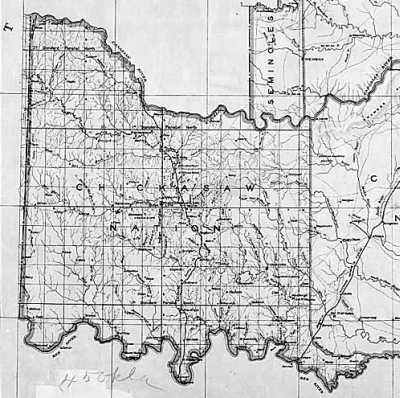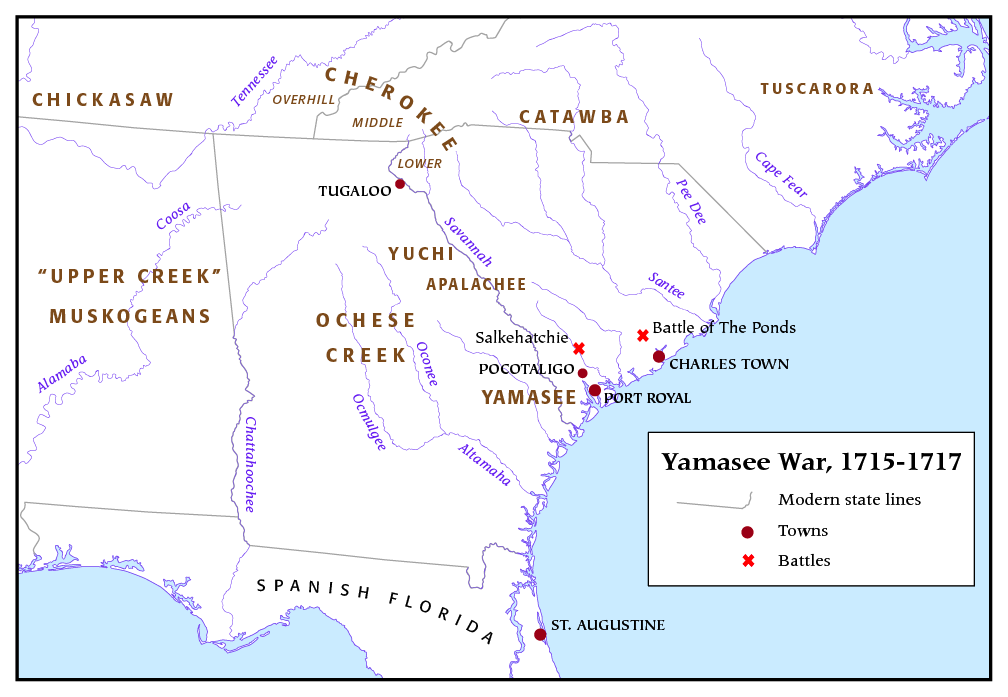|
Tugaloo (Cherokee Town)
Tugaloo (''Dugiluyi'' (ᏚᎩᎷᏱ)) was a Cherokee town located on the Tugaloo River, at the mouth of Toccoa Creek. It was south of Toccoa, Georgia, Toccoa and Travelers Rest (Georgia), Travelers Rest State Historic Site in present-day Stephens County, Georgia, Stephens County, Georgia (US state), Georgia. Cultures of ancient indigenous peoples had occupied this area, and those of the South Appalachian Mississippian culture built a platform mound and village here. It was an administrative and ceremonial center for them. About six miles upriver was Estatoe, another historic Cherokee town in this area. (Other historic towns named Estatoe were identified in both western South Carolina and North Carolina.) Both the historic and prehistoric sites of Estatoe and Tugaloo were inundated by the creation of Lake Hartwell above Hartwell Dam. Etymology Tugaloo's proper name in Cherokee language, Cherokee was ''Dugiluyi'' (ᏚᎩᎷᏱ); abbreviated to ''Dugilu'' (ᏚᎩᎷ). In English, ... [...More Info...] [...Related Items...] OR: [Wikipedia] [Google] [Baidu] |
Nacoochee Mound
The Nacoochee Mound (Smithsonian trinomial 9WH3) is an archaeological site on the banks of the Chattahoochee River in White County, in the northeast part of the U.S. state of Georgia. Georgia State Route 17 and Georgia State Route 75 have a junction near here. First occupied as early as 100-500 CE by Woodland culture people, the site was later developed and occupied more intensively from 1350 to 1600 CE by peoples of the South Appalachian Mississippian culture (a regional variation of the Mississippian culture). The latter people built a characteristic platform mound at this site, and evidence of related villages were found both east and west of the mound. A professional archeological excavation revealed a total of 75 human burials, with artifacts that support dating of the site. The late 19th-century gazebo was installed on top of the mound in 1890 by a European-American owner of the land. After the mound was excavated, former governor Lamartine Griffin Hardman had a reconstru ... [...More Info...] [...Related Items...] OR: [Wikipedia] [Google] [Baidu] |
Muscogee Creek
The Muscogee, also known as the Mvskoke, Muscogee Creek, and the Muscogee Creek Confederacy ( in the Muscogee language), are a group of related indigenous (Native American) peoples of the Southeastern WoodlandsTranscribed documents Sequoyah Research Center and the American Native Press Archives in the . Their original homelands are in what now comprises southern , much of , western |
Tombigbee District
The Tombigbee District, also known as the Tombigbee, was one of two areas, the other being the Natchez District, that were the first in what was West Florida to be colonized by British subjects from the Thirteen Colonies and elsewhere. This later became the Mississippi Territory as part of the United States. The district was also the first area to be opened to white settlement in what would become the state of Alabama, outside of the French colonial outpost of Mobile on the Gulf Coast. The Tombigbee and Natchez districts (also originally a French settlement) were the only areas populated by whites in the Mississippi Territory when it was formed by the United States in 1798. The Tombigbee District was an area mostly on the west side of the Tombigbee River in Alabama; it was first opened to settlement by British colonists under the Treaty of Mobile, negotiated between the British government of West Florida and the Choctaw at a Native American congress held in Mobile in March� ... [...More Info...] [...Related Items...] OR: [Wikipedia] [Google] [Baidu] |
Creek Nation
The Muscogee Nation, or Muscogee (Creek) Nation, is a federally recognized Native American tribe based in the U.S. state of Oklahoma. The nation descends from the historic Muscogee Confederacy, a large group of indigenous peoples of the Southeastern Woodlands. Official languages include Muscogee, Yuchi, Natchez, Alabama, and Koasati, with Muscogee retaining the largest number of speakers. They commonly refer to themselves as Este Mvskokvlke (). Historically, they were often referred to by European Americans as one of the Five Civilized Tribes of the American Southeast.Theodore Isham and Blue Clark"Creek (Mvskoke)" ''Encyclopedia of Oklahoma History and Culture.'' Accessed Dec. 22, 2009 The Muscogee Nation is the largest of the federally recognized Muscogee tribes. The Muskogean-speaking Alabama, Koasati, Hitchiti, and Natchez people are also enrolled in this nation. Algonquian-speaking Shawnee and Yuchi (language isolate) are also enrolled in the Muscogee Nation, al ... [...More Info...] [...Related Items...] OR: [Wikipedia] [Google] [Baidu] |
Alexander McGillivray
Alexander McGillivray, also known as ''Hoboi-Hili-Miko'' (December 15, 1750February 17, 1793), was a Muscogee (Creek) leader. The son of a Muscogee mother and a Scottish father, he had skills no other Creek of his day had: he was not only literate but educated, and he knew the "white" world and merchandise trading well. These gave him prestige, especially with European-Americans, who were glad to finally find a Creek leader they could talk to and deal with. (Prior to contact with Europeans, the Creek did not have leaders or rulers in the European sense.) He used his role as link between the two worlds to his advantage, not always fairly, and became the richest Creek of his time. McGillivray was literate and his "voluminous" correspondence has survived. In many cases his letters are the only source for events in his life, and they naturally present him in a very good light. Recent historians have taken issue with the heroic status he had in earlier histories. McGillivray's stat ... [...More Info...] [...Related Items...] OR: [Wikipedia] [Google] [Baidu] |
Creek Indians
The Muscogee, also known as the Mvskoke, Muscogee Creek, and the Muscogee Creek Confederacy ( in the Muscogee language), are a group of related indigenous (Native American) peoples of the Southeastern WoodlandsTranscribed documents Sequoyah Research Center and the American Native Press Archives in the . Their original homelands are in what now comprises southern , much of , western |
Chickasaw Nation
The Chickasaw Nation ( Chickasaw: Chikashsha I̠yaakni) is a federally recognized Native American tribe, with its headquarters located in Ada, Oklahoma in the United States. They are an Indigenous people of the Southeastern Woodlands, originally from northern Mississippi, northernwestern Alabama, southwestern Kentucky, and western Tennessee. Today, the Chickasaw Nation is the 13th largest tribe in the United States. Currently, the nation's jurisdictional territory and reservation includes about 7,648 square miles of south-central Oklahoma, including Bryan, Carter, Coal, Garvin, Grady, Jefferson, Johnston, Love, McClain, Marshall, Murray, Pontotoc, and Stephens counties. These counties are separated into four districts, the Pontotoc, Pickens, Tishomingo, and Panola, with relatively equal populations. Their population today is estimated to be 38,000, with the majority residing in the state of Oklahoma. In the 17th and 18th centuries, European Americans considered the Chi ... [...More Info...] [...Related Items...] OR: [Wikipedia] [Google] [Baidu] |
Joseph Martin (general)
Joseph Martin, Jr. (1740–1808) was a brigadier general in the Virginia militia during the American Revolutionary War, in which Martin's frontier diplomacy with the Cherokee people is credited with not only averting Indian attacks on the Scotch-Irish American and English American settlers who helped win the battles of Kings Mountain and Cowpens, but with also helping to keep the Indians' position neutral and from siding with the British troops during those crucial battles. Historians agree that the settlers' success at these two battles signaled the turning of the tide of the Revolutionary War—in favor of the Americans. Martin was born in Caroline County, Virginia, and later lived at Albemarle County and then at Henry County, Virginia, at his plantation, ''Belmont'', on Leatherwood Creek in Martinsville, not far from the plantation of his friend Governor Patrick Henry, '' Leatherwood Plantation''. General Martin held many positions during his public life. As a very youn ... [...More Info...] [...Related Items...] OR: [Wikipedia] [Google] [Baidu] |
Magnum Opus
A masterpiece, ''magnum opus'' (), or ''chef-d’œuvre'' (; ; ) in modern use is a creation that has been given much critical praise, especially one that is considered the greatest work of a person's career or a work of outstanding creativity, skill, profundity, or workmanship. Historically, a "masterpiece" was a work of a very high standard produced to obtain membership of a guild or academy in various areas of the visual arts and crafts. Etymology The form ''masterstik'' is recorded in English or Scots in a set of Aberdeen guild regulations dated to 1579, whereas "masterpiece" is first found in 1605, already outside a guild context, in a Ben Jonson play. "Masterprize" was another early variant in English. In English, the term rapidly became used in a variety of contexts for an exceptionally good piece of creative work, and was "in early use, often applied to man as the 'masterpiece' of God or Nature". History Originally, the term ''masterpiece'' referred to a piece of w ... [...More Info...] [...Related Items...] OR: [Wikipedia] [Google] [Baidu] |
James Adair (historian)
James Adair (c.1709–1783) was a native of County Antrim, Ireland, who went to North America and became a trader with the Native Americans of the Southeastern Woodlands. Life From 1735 he resided there for 40 years and was almost entirely cut off from the outside world. From 1744 he resided chiefly among the Chickasaw. In 1751, Adair moved to Laurens County, South Carolina. In the 1740s he led a British trade mission to the Eastern Choctaw tribe at the height of King George's War in an effort to win this nation over from French influence. He dealt extensively with Chief Red Shoes, the leader of the pro-British faction of the Choctaw. This eventually erupted into a fierce civil war amongst the Choctaw that led to Red Shoes' assassination in 1749.''History of the American Indians'' by James Adair, pg 143-148. Adair went forward under the direction of James Glen, governor of South Carolina, but then vehemently blames him for the mission's failure and the loss of his persona ... [...More Info...] [...Related Items...] OR: [Wikipedia] [Google] [Baidu] |
Yamasee War
The Yamasee War (also spelled Yamassee or Yemassee) was a conflict fought in South Carolina from 1715 to 1717 between British settlers from the Province of Carolina and the Yamasee and a number of other allied Native American peoples, including the Muscogee, Cherokee, Catawba, Apalachee, Apalachicola, Yuchi, Savannah River Shawnee, Congaree, Waxhaw, Pee Dee, Cape Fear, Cheraw, and others. Some of the Native American groups played a minor role, while others launched attacks throughout South Carolina in an attempt to destroy the colony. Native Americans killed hundreds of colonists and destroyed many settlements, and they killed traders throughout the southeastern region. Colonists abandoned the frontiers and fled to Charles Town, where starvation set in as supplies ran low. The survival of the South Carolina colony was in question during 1715. The tide turned in early 1716 when the Cherokee sided with the colonists against the Creek, their traditional enemy. The last Nat ... [...More Info...] [...Related Items...] OR: [Wikipedia] [Google] [Baidu] |







